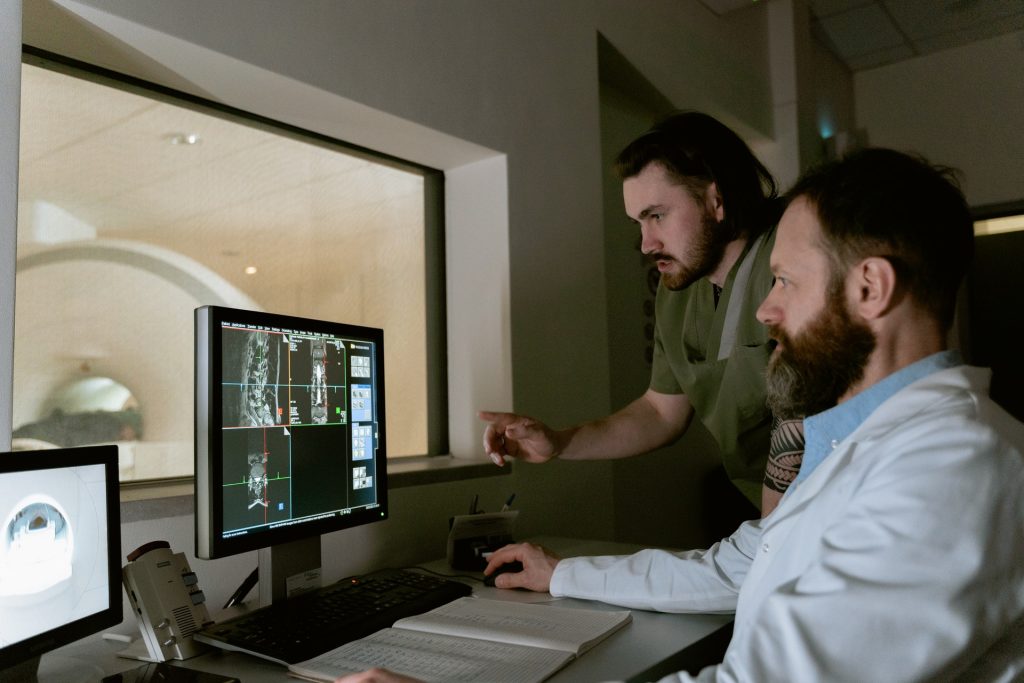Hypersensitivity Link Between MRI and X-Ray Contrast Agents

People with a history of hypersensitivity to iodine-based contrast agents for X-ray based scans, are also susceptible to similar reactions from commonly used MRI contrast agents, according to a large, eight-year cohort study. The study, published in the journal Radiology, also found that premedication or switching to a different MRI contrast agent may reduce risk in patients who have had previous contrast agent reactions.
For a long time, gadolinium-based contrast agents (GBCA) have been used to enhance visualisation of organs, tissues and blood vessels on MRI and provide a more accurate depiction of disease. Though GBCA are relatively safe, recent studies have reported several adverse reactions related to their use, including allergic-like hypersensitivity reactions, such as rash and flushing.
These reactions are increasing in incidence with the widespread use of GBCA, prompting an urgent need for research into risk factors, according to the study’s senior author Hye-Ryun Kang, MD, PhD.
Analysing more than 330 000 cases of GBCA exposure in 154 539 patients over an eight-year period, the researchers found 1304 cases of allergic-like hypersensitivity reactions, for a rate of 0.4%. In patients who had a previous GBCE reaction, the average recurrence rate was 15%.
Acute allergic-like hypersensitivity reactions, or those that occur within one hour of contrast administration, accounted for 1178 cases, while a far smaller number of 126 cases were delayed allergic-like hypersensitivity reactions, or those that occur beyond the first hour and mostly within one week after exposure.
The risk of allergic-like hypersensitivity reactions to GBCAs was higher in those with a history of similar reactions to iodinated contrast media. Normally, having a history of iodinated contrast media hypersensitivity was not thought to be a risk factor for hypersensitivity to GBCAs and vice versa, because of their structural and compositional differences.
“The results of our study challenge this idea,” Dr Kang said.
An underlying predisposition to drug allergies in susceptible patients could be the cause, Dr Kang said, as opposed to any cross-reactivity associated with structural similarities between iodinated contrast media and GBCA. In fact, the risk of hypersensitivity reactions to iodinated contrast media was also higher in those who previously experienced a similar reaction to GBCA.
“Thus, physicians should be aware that patients with a history of hypersensitivity to one of iodinated contrast media or GBCA are at greater risk of developing hypersensitivity reactions to the other,” she said.
Analysis of the data showed that premedication, typically with steroids and antihistamines, and changing the GBCA showed preventive effects in patients with a history of acute allergic-like hypersensitivity reactions. Patients who received premedication and before MRI or were switched to a different GBCA showed the lowest rate of recurrence. Only premedication significantly reduced the incidence of reactions in patients with a history of delayed reactions.
“As the most important preventive measure is avoidance of the culprit agent, a precise record of previously used GBCA should be kept for all patients,” Dr. Kang said. “Physicians should discuss appropriate premedication strategies with their patients prior to MRI procedures.”
Dr Kang nevertheless stressed that contrast-enhanced MRI examinations are invaluable in the diagnosis and follow-up of various diseases, and the overall risk remains low.
“As most of these reactions are mild, we believe the benefits of MRI outweigh the potential risks associated with GBCA use,” she said.
Dr Kang recommended that in all patients receiving an MRI with GBCA exposure, a detailed history of previous hypersensitivity allergic reactions be conducted, and when necessary, appropriate prevention measures should be implemented, such as using premedication and switching to different GBCA types.
Future work would be to perform studies with larger populations to identify possible risk factors and effective preventive strategies for delayed hypersensitivity reactions to GBCA.


